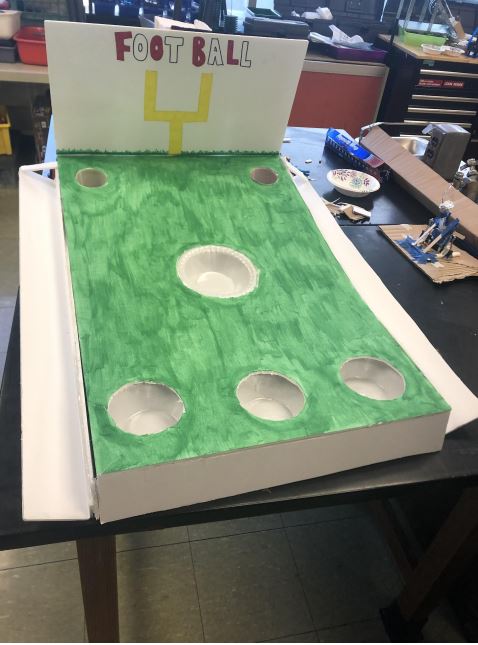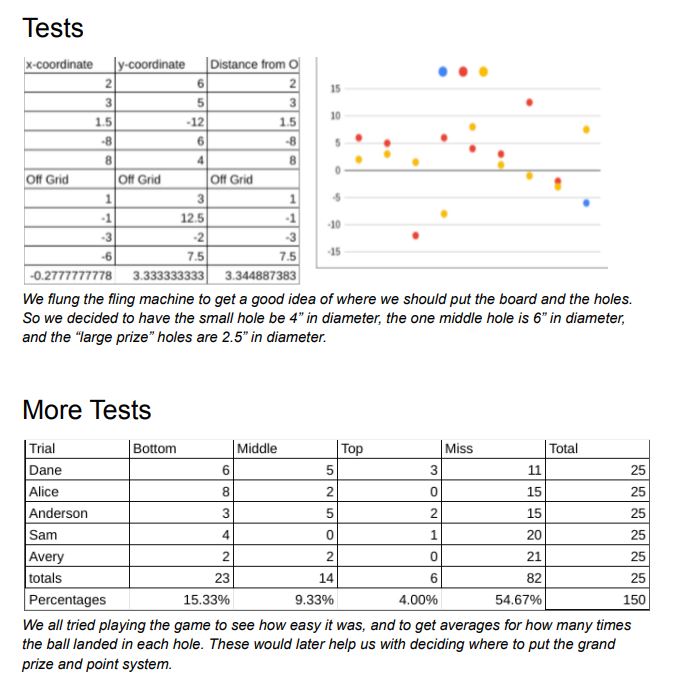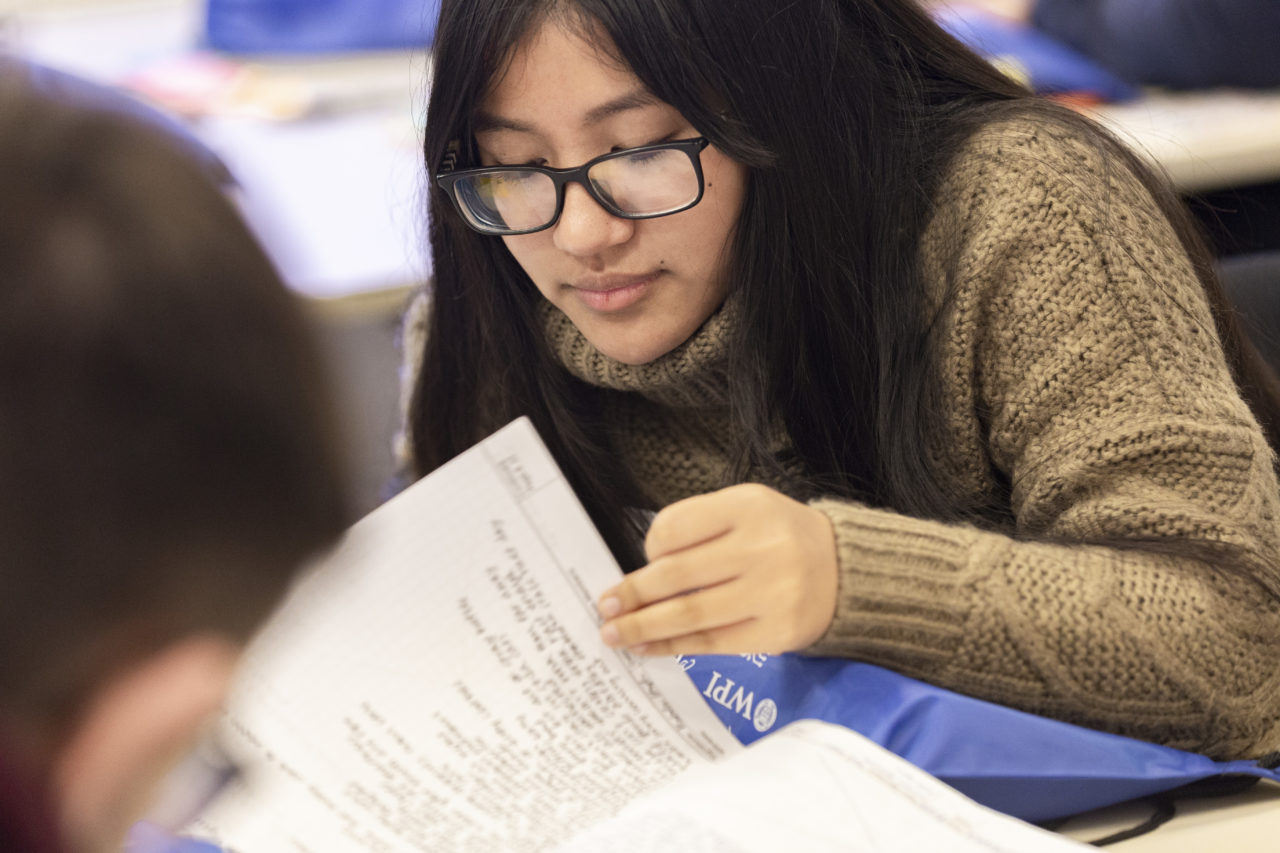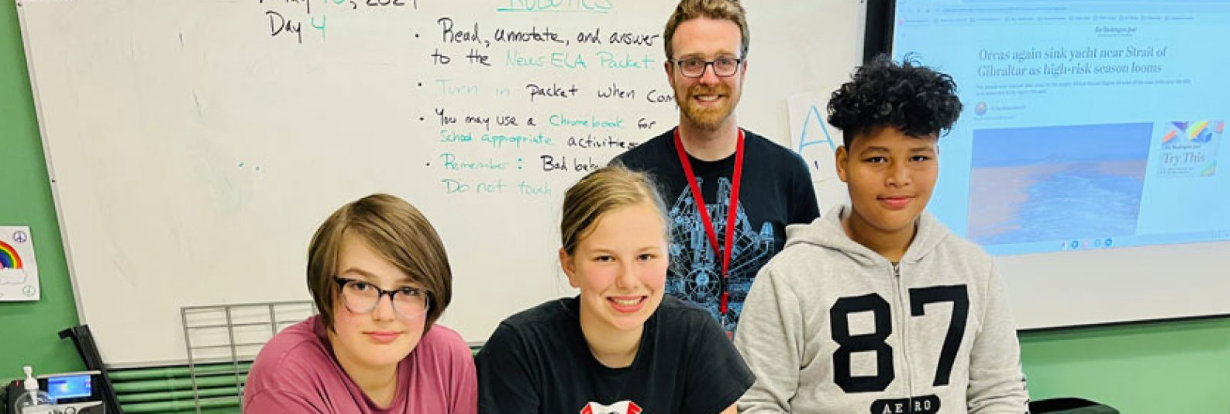
Student Work | Mass STEM Hub
High School | Engineering | IED | Activity: Carnival Design | Top Engineering Project
December 06, 2021
Check out the student work submitted for real-world industry feedback! Learn more about submitting student work to receive real-world feedback here!
Grade: High School
PLTW Course: Introduction to Engineering Design
Submission type: Activity: Carnival Design
Project overview: In the Introduction to Engineering Design course students dig deep into the engineering design process, applying math, science, and engineering standards to hands-on projects. They work both individually and in teams to design solutions to a variety of problems using 3-D modeling software and use an engineering notebook to document their work.
In the carnival design activity students create a game that will be enjoyed by attendees at a carnival. The end-product consists of a three-dimensional game board to be used with a fling machine that includes a target hole. Students create a proposal that includes a model of the launch device, a model of the target game board, and booth setup documentation.
Selected student submission materials:


Link to full project: click here
Select Judge Feedback: “I’ll be helping to evaluate your project. For a little background on myself, I studied mechanical engineering in college and now work as an Industrial Design Engineer at Amazon Robotics. I work to design robotic warehouses to help customers get their packages delivered as quickly and efficiently as possible.
Now onto your project—first off, great job! Your fling machine looks really cool and I think you did a great job with the report. Showing the final product first gives a great overview of what the project is and then showing the earlier design sketches shows how you got there. This approach is very similar to what is often done in professional design reviews in the engineering world. I’m really impressed by the table that you used to select the best design. I couldn’t see all the details of it, but using a scoring system like that is a great method.
The statistical analysis was also great to see. In my job (and in many engineering roles) I need to analyze my designs to see how they are performing and to see how they can be improved. You all really followed the engineering design process by reviewing how the game was performing (where the balls were going) and then adjusting the design accordingly. This also showed that you were thinking about the difficulty level of the game and tailoring it to be in a specific range, which is impressive and demonstrates customer-focused design.
To make a small suggestion, I would recommend cleaning up the data presentation to make it easier to understand for the reader. For example, the plot with the dots showing where balls landed could benefit from having axis labels to describe what’s shown. Also, I appreciate seeing all the data you have, but would recommend including a set of data that shows the very final design with final hole placement.
Overall, I want to say again this is a really impressive project! By doing this type of design and engineering stuff in high school, you’re really getting ahead of the curve in learning STEM. I can tell from the level of detail on your designs and statistical analysis that you all really have an eye for design work, much of which in the professional word can be similar to what you did here (especially in product design). Keep up the good work and good luck with your future studies!
-Industrial Design Engineer, Amazon Robotics
“Thanks for sharing your fun project! I am a Control Systems Engineer who designs noise cancelling headphones for Bose Corporation.
I like the visual appeal of your fling machine, and the gutters are sure to save attendants time and frustration from retrieving balls. I love the data-centric approach you took to assigning point values to assigning point values given the likelihood of landing in a given hole. As an engineer, I rely on data to inform every decision I make.
One suggestion I have would be to re-run your statistics with another group of participants who know the point values assigned to each hole and are incentivized to win the grand prize (since your original data collection effort was made in the absence of point value assignments). This would help you better understand the true likelihood of yielding grand prizes when people are motivated to do so and may result in a re-adjustment of points or tries. Color-coding the holes or drawing special attention to the high-value holes through lights or sound would make the game even more attractive!
In working on consumer electronics products, I always consider the customer in every aspect of my design work. Your project is helping you see how potential carnival goers might enjoy your game and considering ways to make it even more successful. The iterative process of model/design, build, test/measure, and re-design can be very gratifying once you start converging on a successful product! Thank you for pursuing STEM education and hope I this project has made you even more excited about pursuing a STEM career!”
-Control Systems Engineer, Bose Corporation
Industry Award: Top Engineering Project
School: Waltham High School
Teacher: Matthew Burns




